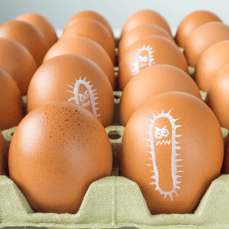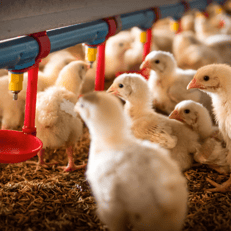- Posted by Anitox
How Does Microbial Quality of Animal Feed Impact Food Safety?
What is Food Safety?
Food safety encompasses how food should be produced, stored, handled and prepared to avoid contamination and prevent foodborne illness in humans. According to the WHO, there are 5 fundamental rules of food safety:
-
- Maintain cleanliness of food preparation areas and tools
- Keep raw food away from cooked food
- Prepare foods under methods and temperature required to cook thoroughly
- Ingredients and leftovers should be stored in appropriate containers at proper temperatures
- Be conscious of water and ingredient safety
Why is Food Safety Important?
The CDC estimates that 1 in 6 Americans contract foodborne illness every year; approximately 1 million of those cases are due to Salmonella. Globally the WHO states that food is responsible for 600 million cases of foodborne disease annually. Obviously, food-related illness and disease is a problem that can impact everyone and anyone, which ultimately makes it essential to everyone and anyone.
Food Safety Responsibilities
-
Consumer Duties
Organizations such as WHO, CDC and USDA outline steps that consumers should take to protect themselves from food sickness. Even the safest foods prepared under the perfect conditions can lead to food poisoning if it gets left out uncovered at room temperature for 6 hours during a party. Consumers are responsible for purchasing and preparing most of what they eat. In fact, survey results published here indicate that post-pandemic 51% of Americans, who just spent 2020 cooking more, will continue to do so. As our own personal chefs – we all bear a responsibility to do our due diligence when it comes to food safety.
-
Producer Duties
Governments globally charge regulatory bodies with responsibility for devising and implementing governance procedures to ensure food producers, processors and retailers bring safe food materials to market. Worldwide, Salmonella in poultry is a prominent subject. From the beginning of live production through processing, it is important to note that poultry producers utilize several mitigation strategies to eliminate Salmonella from poultry meat products.
Poultry Feed and Food Safety
Poultry feed safety is an objective many feed mills strive to meet. Not only is there a necessity to produce quality, pathogen-free feed to improve bird performance, but reducing the microbial load of feed also reduces the pathogen prevalence with live production. Feed pathogen control is one way that live production works with processing to produce safe meat.
-
Feed as a Fomite

Numerous studies have shown that viruses and bacteria alike can survive in feed. Feed can be contaminated through naturally contaminated raw materials or vectors such as dust, soil, insects and other pests. One study found aerobic bacteria can range from less than 100 cfu/g to more than 100,000 cfu/g in raw materials, approximately 1000 cfu/g in pelleted feed and around 10,000 cfu/g in non-pelleted feed (Kwiatek et al. 2008).
-
Salmonella in Feed
A recent publication, Incidence of Salmonella serovars isolated from commercial animal feed mills in the United States and serovar identification using CRISPR analysis, screened almost 400 various feed samples from all over the US and found that that in two different trials, 15% and 9.1% of feed mills were home to Salmonella.
Learn More About Feed Pathogen Control
